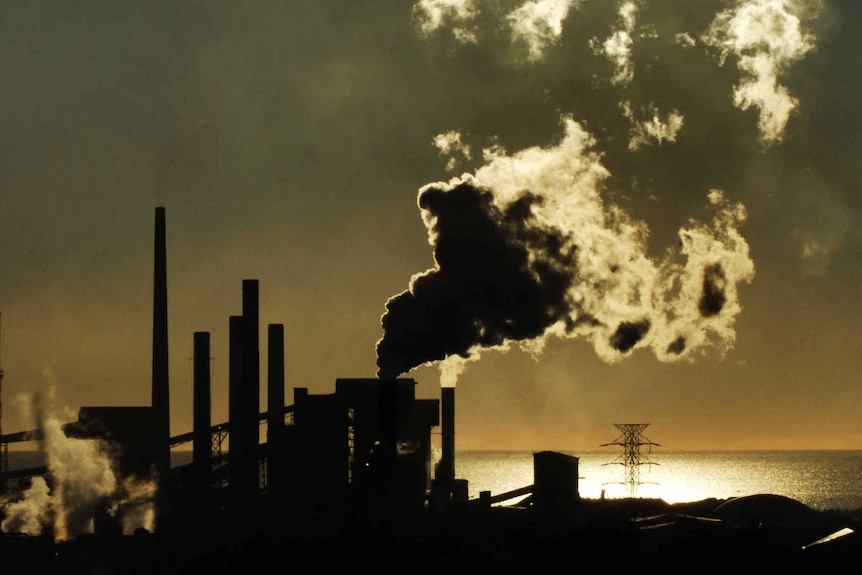A new global organisation monitoring carbon emissions from steelmakers is urging Australian company Bluescope to abandon plans to reline its main blast furnace at Port Kembla in Wollongong.
Steelwatch says the steel industry worldwide is responsible for about seven per cent of carbon emissions, but is lagging behind in transitioning away from carbon.
Bluescope’s current main blast furnace at Port Kembla is due to reach end of life between 2026 and 2030, prompting a billion-dollar investment to replace it.
Steelwatch director Caroline Ashley said the Sunsetting Coal report makes a case for steel facilities like Bluescope to instead invest the money in new technologies like hydrogen.
“We know we cannot continue with business as usual,” she said.
“It’s not easy for countries like my own, the UK, for Australia, for the richer OECD countries but we have to lead the way and we have to say no to any relining.
“Because if we reline our blast furnaces now we will lock in that technology and we will lock on those carbon emissions for another 15 or 20 years.
“We will blow the carbon budget out of the water and we will blow any hopes of stabilising climate change.”
Caroline Ashley said Port Kembla was not alone, as the major 400 steel facilities around the globe needed to commit to change now in order for the world to get on track with a 1.5-degree global warming trajectory by 2050.
“If Bluescope say they can’t go for fully hydrogen based green direct reduced iron now this year, there are things they can do to start putting that in place,” she said.
“They could get the proper hydrogen ready plants up and running and gradually make the transition.
“They could look at clean green iron that can come from other parts of Australia and is developing
“I know Bluescope are testing things, I know it’s not easy but the climate change cost of not doing it is so much bigger I would urge them to do more research, more market development, more putting in place electric arc furnace or hydrogen ready plants.”
Bluescope investment in innovation
Bluescope didn’t respond to ABC’s requests for comment but has detailed it’s plans for the blast furnace reline in documents to approval body, NSW Planning.
One submission prepared in July 2022 by GHD Pty Ltd on behalf of Bluescope to support their application for approval responds to concerns raised about their Environmental Impact Statement.
“Low greenhouse gas iron and steelmaking have been considered and assessed by BlueScope but suitable technologies for the Port Kembla Steelworks are unlikely to be available and commercially viable at scale until a time well after that required to replace the No. 5 Blast Furnace,” the report said.
“The only technically feasible and commercially viable option for BlueScope to continue steelmaking at Port Kembla in the short to medium term is to progress
with the existing configuration and reline the No. 6 Blast Furnace.”
“The reline of the No. 6 blast furnace provides a ‘bridge’ to transition from the current blast furnace technology to new and emerging low emissions technologies when they are commercially available and economically viable.
“The project will be operated in accordance with BlueScope’s climate strategy and decarbonisation pathway with the goal to achieve net zero greenhouse gas emissions by 2050.”
Bluescope received funding in June 2022 to the value of $925,000 from the Australian Renewable Energy Agency to “investigate options to decarbonise operations” at the Port Kembla Steelworks.
The focus on these studies has been substituting fossil fuels with renewable carbon-based materials like renewable biochar, and secondly direct carbon avoidance.
ARENA said that involves “using hydrogen derived from renewable energy in steelmakeing processes, including co-injection of renewable hydrogen into the blast furnace for partial replacement of coal.”

